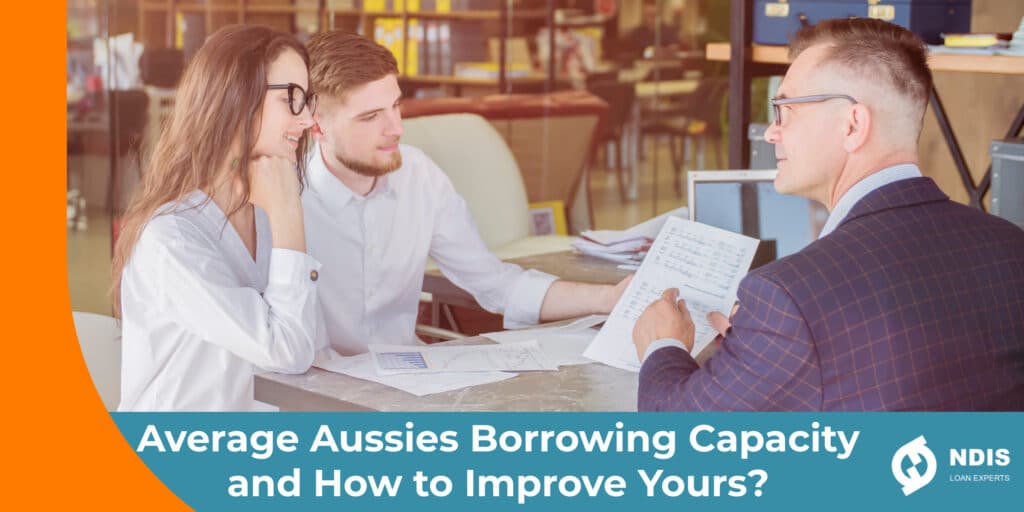When it comes to buying a home or an investment property, knowing your borrowing capacity is key. It dictates how much you can spend on a property, and recent interest rate hikes have made it even more crucial to grasp and improve your capacity. In this guide, we’ll break down practical steps to strengthen your financial standing and open up more property options.
Deciphering Borrowing Capacity
Your borrowing capacity is the key factor in determining how much you can invest in a property. It’s a calculation by a lender, factoring in various elements such as your income, age, existing debts, and lifestyle. The recent rate hikes exacerbated the challenge, leading to a noteworthy reduction in the average earner’s capacity by more than $10,000. To navigate this scenario and optimise your borrowing potential, consider these strategic steps.
Practical Strategies to Enhance Your Borrowing Capacity
Know Your Credit Score
Your credit score is essential. It gives insights into your financial health and areas for improvement. You can check your credit score for free once every three months. It’s a good idea to keep on top of your credit score so you can identify any areas for improvement (for example, paying overdue debt) or fix any errors that have appeared on your report. You can check your credit score with the following reporting agencies:
If you need some assistance, NDIS Loan Experts can guide you in understanding and leveraging your credit score.
Reduce Unsecured Debts
Cutting down high-interest unsecured debts like credit cards and personal loans may help boost financial health, which can directly improve borrowing capacity. Simply put, the less debt you are paying back, the more you can afford to borrow.
Optimise Credit Limits
Evaluate and reduce excess credit limits. Simplifying your credit cards shows financial responsibility, a positive signal for lenders. However, the other side of this coin is your credit utilisation ratio. When you reduce your credit limits, the utilisation ratio increases. For example, if you are using $5,000 each month of a $10,000 limit, the credit utilisation ratio is 50%. When the credit is reduced, let’s say to $5,000, the utilisation ratio is now 100% which signals to lenders that you are more reliant on credit. This can have a detrimental impact on your credit score, so it’s wise to seek guidance on the right credit limit for your circumstances.
Choose the Right Loan Product
Pick a loan product that suits your needs. By using the wrong type of loan, you could unnecessarily be paying significantly more in repayments and interest expenses. NDIS Loan Experts specialise in tailoring solutions to align with your financial goals.

Organise Financial Affairs
Streamline your financial records, including up-to-date tax returns. This saves time in the loan application process and demonstrates financial diligence.
Boost Your Deposit
Saving a substantial deposit showcases financial discipline and increases your borrowing capacity. It can also help you save money by avoiding additional costs such as lender’s mortgage insurance.
Trim Expenses
Identify and cut unnecessary expenses. By reducing your lifestyle and living expenses, lenders will be more willing to lend a higher amount.
Consider Joint Applications
Explore joint property ownership to distribute liabilities effectively. If your partner can financially support dependents, this can positively influence your borrowing capacity.
Increase Income Streams
Seek avenues to boost your income, whether through additional work, leveraging assets, or exploring investment opportunities. Higher income directly correlates with an increased borrowing capacity.
Explore Mortgage Term Options
Evaluate the impact of different mortgage terms on your repayments. When the cost of debt is spread over a longer period, your borrowing capacity is likely to increase. However, it’s important to be aware that this will also increase your total interest expense compared to a shorter loan term. NDIS Loan Experts can guide you through the nuances, helping you choose a term that aligns with your financial strategy.
How NDIS Loan Experts Elevate Your Borrowing Capacity for SDA Investments
Investing in Specialist Disability Accommodation (SDA) under the National Disability Insurance Scheme (NDIS) introduces unique considerations. NDIS Loan Experts collaborate with lenders to obtain SDA-specific valuations. This specialised approach factors in the higher rent associated with SDA properties, enhancing serviceability.
Additionally, recognising that SDA properties differ from standard homes, NDIS Loan Experts work to secure valuations that reflect the unique nature of these investments, further optimising borrowing capacity.
Empowering Your Property Journey
Your borrowing capacity is a dynamic element that requires strategic navigation, especially in the current financial landscape. NDIS investors can leverage tailored solutions from NDIS Loan Experts to fortify their financial position. Empower your property journey with precision and expertise.
Ready to elevate your borrowing capacity and delve into NDIS property investments? Contact NDIS Loan Experts today for personalised assistance and strategic financial solutions tailored to your NDIS investment goals.


